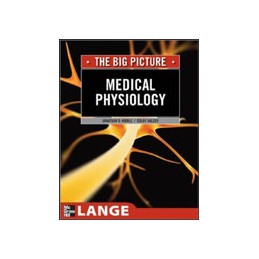- Obniżka


 Dostawa
Dostawa
Wybierz Paczkomat Inpost, Orlen Paczkę, DHL, DPD, Pocztę, email (dla ebooków). Kliknij po więcej
 Płatność
Płatność
Zapłać szybkim przelewem, kartą płatniczą lub za pobraniem. Kliknij po więcej szczegółów
 Zwroty
Zwroty
Jeżeli jesteś konsumentem możesz zwrócić towar w ciągu 14 dni*. Kliknij po więcej szczegółów
Get the BIG PICTURE of Medical Physiology -- and focus on what you really need to know to ace the course and board exams!
4-Star Doodys Review!This excellent, no-frills approach to physiology concepts is designed to help medical students and other health professions students review the basic concepts associated with physiology for the medical profession. The information is concise, accurate and timely.
If you dont have unlimited study time Medical Physiology:: The Big Picture is exactly what you need! With an emphasis on what you “need to know” versus “whats nice to know,” and enhanced with 450 full-color illustrations, it offers a focused, streamlined overview of medical physiology. Youll find a succinct, user-friendly presentation designed to make even the most complex concepts understandable in a short amount of time.
With just the right balance of information to give you the edge at exam time, this unique combination text and atlas features::
Opis
Membrane Potentials and Action Potentials
Cellular Communications
Autonomic Nervous System
Neuromuscular and Synaptic Transmission
Skeletal Muscle
Smooth Muscle
Blood Groups--Transfusion
Hemostasis and Coagulation
Cardiac Electrophysiology
Cardiac Muscle and Mechanics
Regulation of Venous Return and Cardiac Output
Regulation of Arterial Pressure
Capillary Fluid Exchange
Regulation of Blood Flow
Urine Formation
Glomerular Filtration Rate
Renal Blood Flow
Tubular Processes
Regulation of Extracellular Osmolarity
Control of Blood and Extracellular Volume
Renal Regulation of K+
Ca++, Phosphate, and Mg++
Acid-Base Disturbances
Diuretics
Alveolar-Blood Gas Exchange
Transport of O2 and CO2
Pulmonary Circulation and Edema
Ventilation/Perfusion Defects
Control of Breathing
Causes of Hypoxemia
